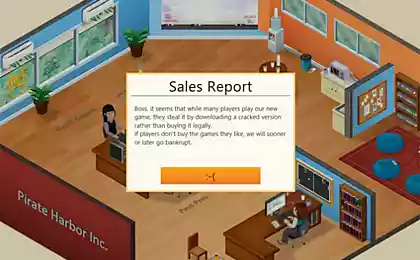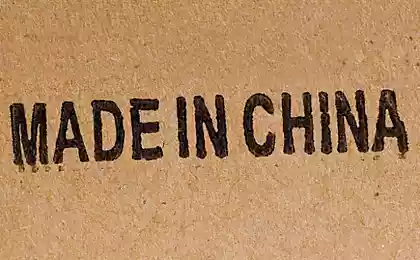1329
Anti-piracy measures 80
Long before the invention of CD-Key and authorization on Steam Company excelled as they could, giving more and more obstacles to the use of illegal copies of games. "Kanobu" recalls how publishers to combat piracy of video games 30 years ago and how it was effective.
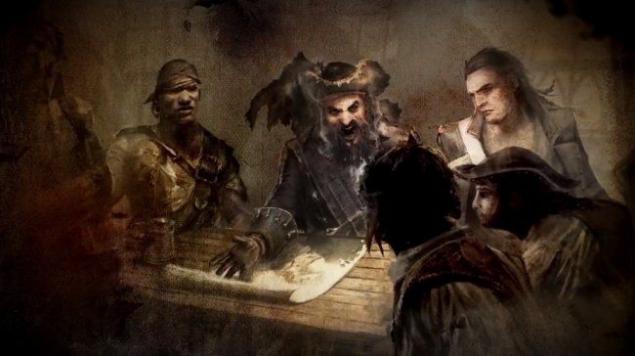
Lenslok
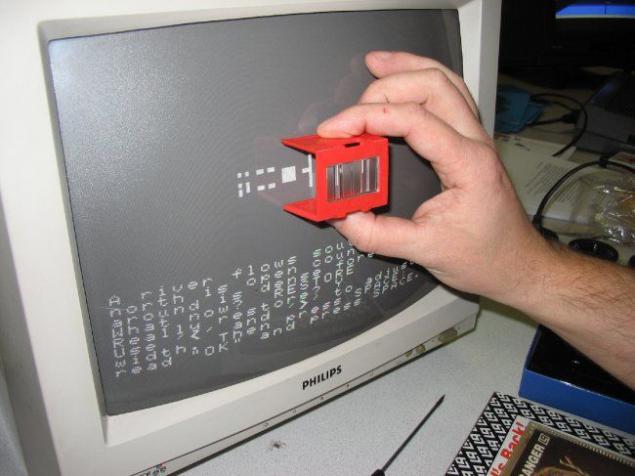
In the early 80s a few games for home computers such as the Commodore 64 and ZX Spectrum came with an unusual device. Before starting the game, the screen displays an encrypted code that had to be decoded by looking at it through the lens of the device. In the plate is a plastic lens, with which the player can recognize the code displayed on the monitor. Decipher the code must be entered in the console line, then opened full access to the game. If the code has been entered correctly, the message "Thank you for your interest in our product. Nice try ».
The code has been calibrated to display on monitors common at the time of the diagonals, but the biggest or the smallest screens cipher could be seen. In addition, the defense easily cracked - it was enough to know how to program a little bit. Everything else, complete with many games for some reason, there are versions of the device for other products, because of what the code was impossible to decode and, accordingly, to run the game.
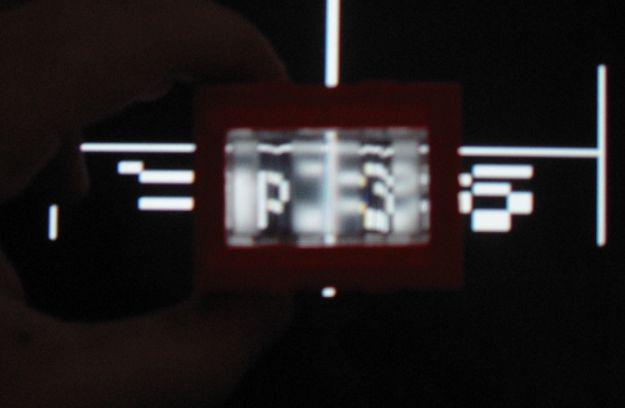
Numerous complaints from angry players finally destroyed the reputation of an unusual device. Many owners of licensed copies could not start the game, as a result, even those games that originally used Lenslok, republished without any protection.
Logo Nintendo
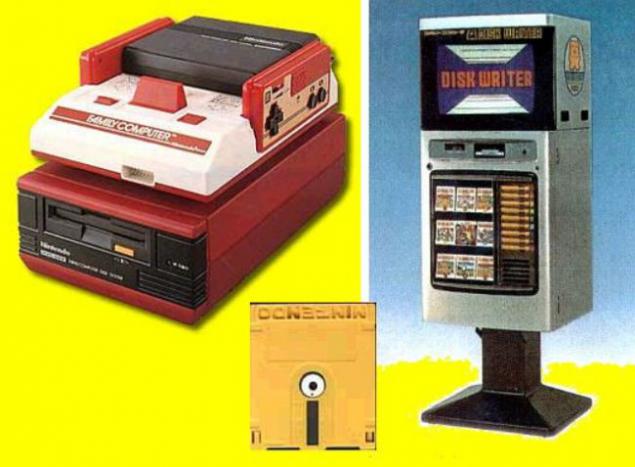
In 1985, Nintendo released in Japan accessory Famicom Disk System for its eight-console, which allows you to run games from the disks. Projects, released exclusively for FDS, were the first games with the ability to save - itself a floppy disk with the game at the same time and used as a memory card. Among these were the games The Legend of Zelda, Final Fantasy, Metroid, and other, later released for the Famicom classic media, but with built-in battery. In contrast to conventional cartridges, diskettes was very easy to write and re - possessing a computer, anyone can copy their contents. To prevent piracy, Nintendo developed a unique format diskettes that do not fit into the standard floppy drive and the game is copy protected. In addition, the spine of the floppy disk was engraved a large company logo, which served as the main obstacle to unscrupulous players - floppy without engraving could not be established in the FDS, since the drive device required physical contact with the grooves in the form of inscriptions "Nintendo" on the floppy disk. < br />
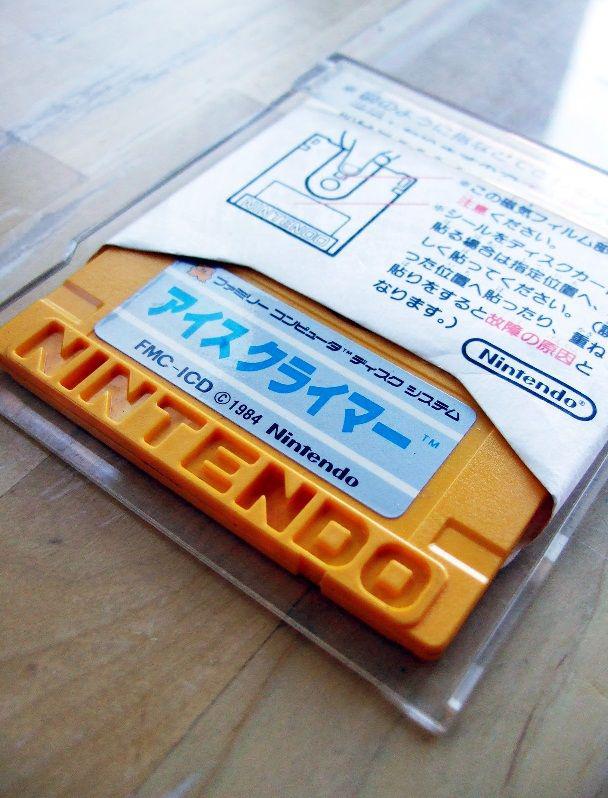
The whole country was established more than 3 thousand. Official machines, which in turn can be written on a pre-selected game bought a floppy disk. Machine code is written to the media play in front of the customer. Initially, the scheme worked, and FMD does not read floppy without engraving, even if they have been recorded identical copies of official information. Experience and planned to move to the North American market, but in the end the pirates yet learned to copy the floppy disks Nintendo, and the practice has spread so widely that the instructions for playing illegal copies were distributed in stores, even video games.
Puzzle
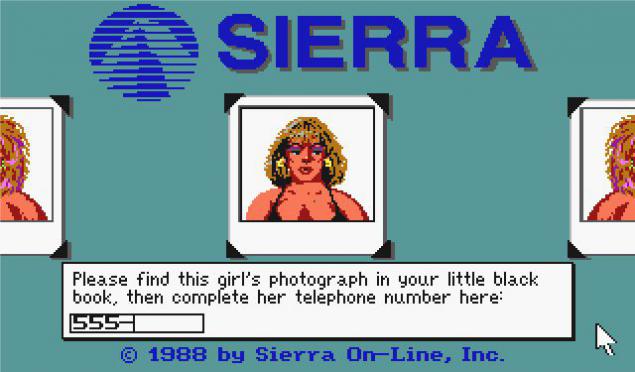
Some games use their own method of dealing with piracy. In the late 80's complete with a copy of the game for the PC can be found printed instructions, only having the player to perform the required action from him and run the game.
For example, in 1988 the game Leisure Suit Larry Goes Looking for Love (in Several Wrong Places) before running shows images of women. To unlock the screen, it was necessary to find the same picture in the instructions and enter a command-line in the phone number listed next to the image a certain girl. Similar puzzles encountered in games Ski Or Die and 4D Boxing. This was long before the mass distribution of scanners, so that a part resourceful method of protection may have played.
Electronic Arts has always been famous for sophisticated methods of combating illegal distribution of their games. Long before the cursed many online mode in the last game SimCity company sold StarFlight (1986) complete with a cardboard wheel. Each time before starting the game the ship are asked to enter a code of two words, the player receives rotating wheel. In a similar way from the pirates tried to protect Monkey Island in 1990. With the game supplied cardboard wheel, which depicted the face of pirates and combinations of numbers. Periodically to continue the game needed to turn the wheel and enter the number corresponding to the face displayed a pirate.

But the most common method of protection were the basic problems in the spirit of "Enter the thirteenth floor in the fifth line on the seventh page", which dealt only with the official printed instructions. This method has been used, for example, X-COM: UFO Defense (1994), the original Bard's Tale (1985) and Buzz Aldrin's Race Into Space (1993).
Despite the fact that the copy instruction in the home was difficult, this method of combating piracy, too quickly faded away before the spread of the Internet. The role played by word of mouth - the players wrote out the correct combination of hand and exchanged answers.
Electronic keys (dongles)

In 1980, a programmer Pete Dawson decided to protect the first version of its text editor Word Craft by physical electronic switches being connected to the computer.
Device is inserted into the 21-pin and 9-pin connectors on the computer. Without the program just will not start. I must say that a certain effect was - Word Craft legal sales have doubled. But success was doubtful, because in order to recoup the expensive production of protective devices, sales would have increased sixfold.
Version of Bomberman game for home computers Amiga in 1991 also used the dongle. Connected device calculated the time limit during the passage of each level. If your computer can not detect the key, the time was recorded at zero, and the game became impassable.
Nikita Whales

Lenslok

In the early 80s a few games for home computers such as the Commodore 64 and ZX Spectrum came with an unusual device. Before starting the game, the screen displays an encrypted code that had to be decoded by looking at it through the lens of the device. In the plate is a plastic lens, with which the player can recognize the code displayed on the monitor. Decipher the code must be entered in the console line, then opened full access to the game. If the code has been entered correctly, the message "Thank you for your interest in our product. Nice try ».
The code has been calibrated to display on monitors common at the time of the diagonals, but the biggest or the smallest screens cipher could be seen. In addition, the defense easily cracked - it was enough to know how to program a little bit. Everything else, complete with many games for some reason, there are versions of the device for other products, because of what the code was impossible to decode and, accordingly, to run the game.

Numerous complaints from angry players finally destroyed the reputation of an unusual device. Many owners of licensed copies could not start the game, as a result, even those games that originally used Lenslok, republished without any protection.
Logo Nintendo

In 1985, Nintendo released in Japan accessory Famicom Disk System for its eight-console, which allows you to run games from the disks. Projects, released exclusively for FDS, were the first games with the ability to save - itself a floppy disk with the game at the same time and used as a memory card. Among these were the games The Legend of Zelda, Final Fantasy, Metroid, and other, later released for the Famicom classic media, but with built-in battery. In contrast to conventional cartridges, diskettes was very easy to write and re - possessing a computer, anyone can copy their contents. To prevent piracy, Nintendo developed a unique format diskettes that do not fit into the standard floppy drive and the game is copy protected. In addition, the spine of the floppy disk was engraved a large company logo, which served as the main obstacle to unscrupulous players - floppy without engraving could not be established in the FDS, since the drive device required physical contact with the grooves in the form of inscriptions "Nintendo" on the floppy disk. < br />

The whole country was established more than 3 thousand. Official machines, which in turn can be written on a pre-selected game bought a floppy disk. Machine code is written to the media play in front of the customer. Initially, the scheme worked, and FMD does not read floppy without engraving, even if they have been recorded identical copies of official information. Experience and planned to move to the North American market, but in the end the pirates yet learned to copy the floppy disks Nintendo, and the practice has spread so widely that the instructions for playing illegal copies were distributed in stores, even video games.
Puzzle

Some games use their own method of dealing with piracy. In the late 80's complete with a copy of the game for the PC can be found printed instructions, only having the player to perform the required action from him and run the game.
For example, in 1988 the game Leisure Suit Larry Goes Looking for Love (in Several Wrong Places) before running shows images of women. To unlock the screen, it was necessary to find the same picture in the instructions and enter a command-line in the phone number listed next to the image a certain girl. Similar puzzles encountered in games Ski Or Die and 4D Boxing. This was long before the mass distribution of scanners, so that a part resourceful method of protection may have played.
Electronic Arts has always been famous for sophisticated methods of combating illegal distribution of their games. Long before the cursed many online mode in the last game SimCity company sold StarFlight (1986) complete with a cardboard wheel. Each time before starting the game the ship are asked to enter a code of two words, the player receives rotating wheel. In a similar way from the pirates tried to protect Monkey Island in 1990. With the game supplied cardboard wheel, which depicted the face of pirates and combinations of numbers. Periodically to continue the game needed to turn the wheel and enter the number corresponding to the face displayed a pirate.

But the most common method of protection were the basic problems in the spirit of "Enter the thirteenth floor in the fifth line on the seventh page", which dealt only with the official printed instructions. This method has been used, for example, X-COM: UFO Defense (1994), the original Bard's Tale (1985) and Buzz Aldrin's Race Into Space (1993).
Despite the fact that the copy instruction in the home was difficult, this method of combating piracy, too quickly faded away before the spread of the Internet. The role played by word of mouth - the players wrote out the correct combination of hand and exchanged answers.
Electronic keys (dongles)

In 1980, a programmer Pete Dawson decided to protect the first version of its text editor Word Craft by physical electronic switches being connected to the computer.
Device is inserted into the 21-pin and 9-pin connectors on the computer. Without the program just will not start. I must say that a certain effect was - Word Craft legal sales have doubled. But success was doubtful, because in order to recoup the expensive production of protective devices, sales would have increased sixfold.
Version of Bomberman game for home computers Amiga in 1991 also used the dongle. Connected device calculated the time limit during the passage of each level. If your computer can not detect the key, the time was recorded at zero, and the game became impassable.
Nikita Whales










